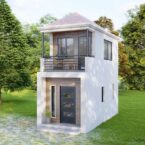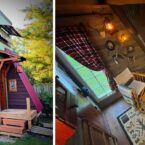
In a heartwarming turn of events, a missing championship endurance horse named Flex was reunited with his owner, Houston Peschl, after a dramatic and wide-ranging search effort in the remote countryside of Alberta. The ordeal began when Flex bolted after suffering a bee sting, disappearing into the vast wilderness near Bragg Creek. The Peschls, desperate to find their cherished companion, mobilized a search that involved professional trackers, Continue reading “Missing Horse Reunited With its Family After ‘Crazy Journey’” »

Local studio Patrick Bradley Architects has ingeniously transformed the remnants of a historic farm in Northern Ireland by integrating a cantilevered shipping container into the existing ruined walls, resulting in a striking contemporary home named Barneys Ruins. Located in Mid Ulster, this project revitalizes a traditional clachan, a small farming settlement, by blending modern architectural elements with the preserved 200-year-old ruins of an old cottage. The site, inherited by Patrick Bradley from his great-great uncle Barney, inspired a design that juxtaposes the past and present. The shipping container, which was converted off-site and placed on steel columns within the cottage’s original footprint, houses the main living spaces. It features minimalist plywood joinery and terrazzo flooring, with large south-facing sliding doors opening onto a balcony, offering stunning views of the rewilded meadow and promoting local biodiversity.

The architectural approach of Barneys Ruins celebrates the site’s heritage while introducing modern amenities, embodying a profound connection to the land passed down through generations. Accessed by a grated steel staircase, the house also includes a converted barn annex with a concrete fireplace, chimney breast, and a mezzanine sleeping area, maintaining the original agricultural character with a galvanized corrugated steel roof. Sustainability was a key consideration, with reused and recycled materials from the farm, such as old gates and reclaimed stones, to minimize the carbon footprint. At night, LED strips behind the cladding create an ethereal glow, symbolizing the dwelling’s significance in the landscape, akin to the mature Yew Tree at the heart of the local town. This innovative project, alongside other works by Patrick Bradley Architects like the Grillagh Water House, showcases a harmonious blend of historic preservation and contemporary design, bridging the gap between past and present.





Living in a city often means waking up to views dominated by buildings and concrete structures. For many, the dream is to one day reside in a place surrounded by nature while retaining the conveniences of modern civilization. Contemporary housing concepts are increasingly focused on blending indoor and outdoor environments, allowing residents to connect with nature simply by stepping outside or looking through their windows. One such example is Copas, a contemporary and minimalist concrete house situated in the forests of Valle de Bravo in Mexico. This house offers breathtaking views of nature from every window and an exceptional perspective from the rooftop terrace, which integrates seamlessly with the surrounding forest. The exterior colors of the house are carefully chosen to match the tree trunks and rock formations, and its design evokes the sensation of climbing a mountain.

The private bedrooms on the lower level feature expansive glazing that frames the forest, while the kitchen, dining room, and lounge space also provide stunning views of the surrounding woodlands. The rooftop terrace extends towards the trees, enhancing the feeling of being immersed in nature, and the swimming pool on the upper level offers a perfect retreat for relaxation. The two-volume structure is designed to integrate into the slope of the land, minimizing excavation and environmental disruption. The house features various finishes to complement the concrete aesthetic, including wood furniture, natural rugs, and fabrics, creating a cozy and inviting atmosphere. This innovative home design is ideal for those seeking a harmonious blend of modern living and natural surroundings, offering a serene escape from the urban concrete jungle.


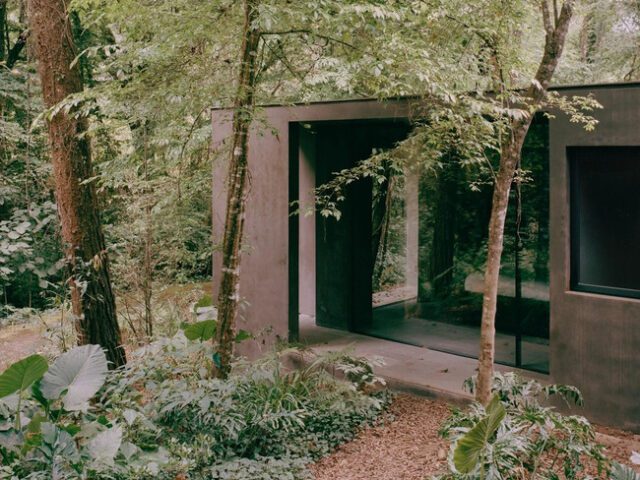








Alisa and Kevin’s DIY conversion of a 1996 BlueBird school bus, named “Hygge,” beautifully embodies the Danish concept of coziness and contentment. The exterior of the bus is painted off-white and remains largely unchanged, save for some windows replaced with metal panels and the addition of solar panels on the roof. However, the interior transformation is where the magic happens. The couple has designed a bright and inviting living space with white cabinetry and wooden accents, following a “side-by-side” room layout that includes a charming seating area, a functional kitchen with a rolling pantry, a bathroom with a composting toilet and shower, and a cozy bedroom with ample storage.

What truly sets Hygge apart is the integration of a small garden and the thoughtful use of space. The dashboard blooms with succulent plants when the bus is stationary, adding a touch of nature indoors. The seating area features versatile furniture, like a double dropleaf table from Ikea and a couch that converts into a guest bed. The kitchen is equipped with modern appliances, including a residential-size fridge and live-edge countertops, ensuring that Alisa and Kevin can cook and dine comfortably. Storage solutions abound throughout the bus, from the rolling pantry in the kitchen to the nine drawers under the bed, and even a garage space at the rear for e-bikes and tools. With a 70-gallon freshwater tank and a robust solar power system, this skoolie offers the couple a sustainable and cozy home on wheels, blending practicality with a homely ambiance.



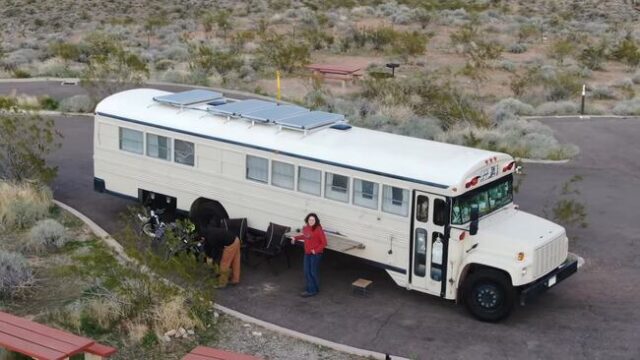
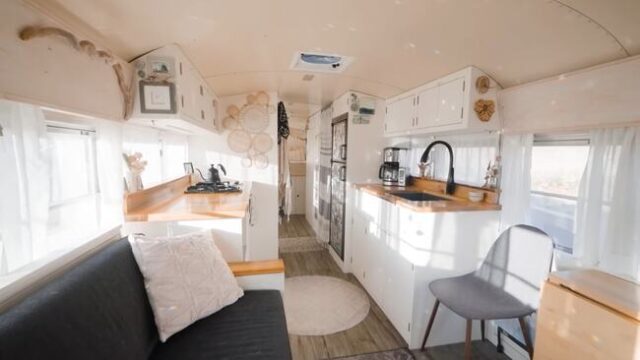





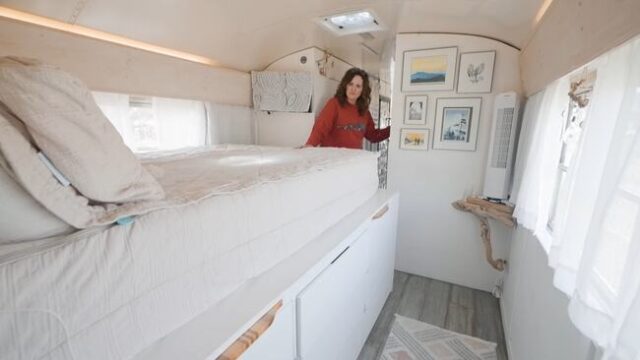
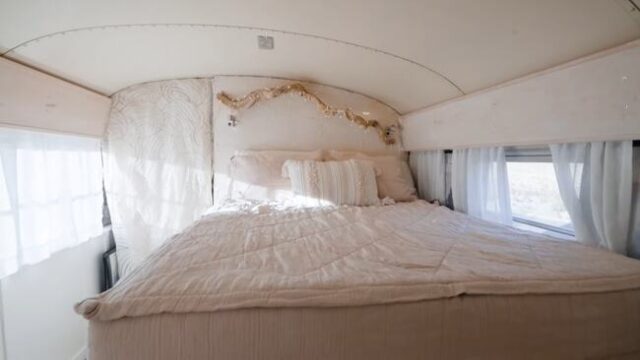

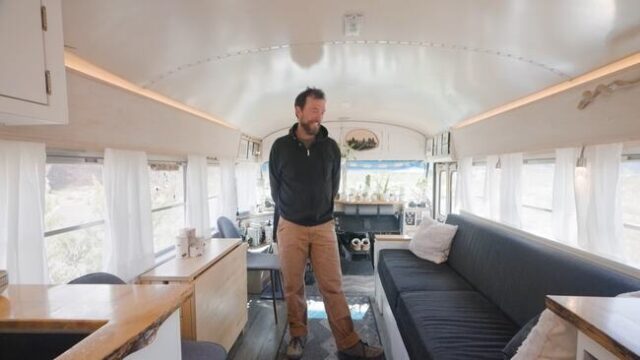
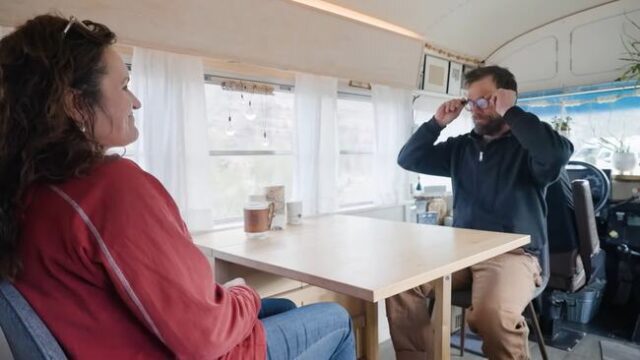





Cats and dogs are often seen as sworn enemies, but despite their hilarious antics and infamous squabbles, they can sometimes surprise us by becoming the best of frenemies. One pet pair perfectly illustrated this in a video shared by their owner. Using GPS trackers by Tractive, the pet owner traced the live location of both pets to show how his cat secretly follows him and the dog every time they go for a walk. The video captures the essence of their unique relationship, with the dog happily leading the way and the cat cunningly maintaining a discreet distance.

A satellite view of both pets’ paths, revealed that while the dog loyally followed its owner on the sidewalk, the cat—secretly eager to join in—took a winding route through the bushes, stealthily trailing behind to avoid detection. Perhaps the cat is following them out of curiosity, or maybe it just wants to stay close to its family, while maintaining a cool, distant facade. Either way, the video just goes to show that maybe cats aren’t so unpredictable after all. This delightful footage serves as a reminder that despite their independent reputation, cats can be just as attached to their human and canine companions, albeit in a secretive way.

Scientists have discovered that climate change is causing longer days by slightly slowing down Earth’s rotation. This effect, although minuscule and measured in milliseconds, is attributed to the melting of glaciers, which redistributes mass from polar ice caps to the equator as meltwater flows into the oceans. This redistribution alters Continue reading “Scientists Discover That Climate Change Is Causing Longer Days” »

The Olympic torch relay is one of the most exciting events leading to the games. Inspired by the ancient iterations of the games, the Olympic flame travels from Olympia, Greece, to the host city, passing through multiple, carefully selected people’s hands. Much like the logo and the mascot, each organizing committee gets to design its torch. Often a reflection of the trends and the available technology, the Olympic torches have changed a lot over the last several decades, but they all share a common mission. “The Olympic Torch Relay heralds the start of the Olympic Games and transmits a message Continue reading “Take a Look at the Evolution of the Olympic Torch Through the Years” »

Inspired by a groundbreaking forest restoration initiative in Chile, the English town of Lewes has launched an innovative project to rewild a local urban nature reserve by enlisting the help of dog walkers. The reserve, heavily degraded by foot traffic, benefits from the natural behavior of dogs who, equipped with seed-filled saddlebags, spread wildflower seeds as they run through the woods. This method emulates the seed dispersal once performed by wolves, who Continue reading “Armed with Backpacks of Seeds, Local Pooches Enlisted to Help Rewild Urban Nature Reserve” »

When it comes to campers, the quality of the journey matters just as much as the destination. Any seasoned traveler will want a camping trailer that is aerodynamic, easy to tow, and has low energy consumption. South Korean brand Polydrops recently unveiled their P21 camper, which not only fits these requirements but can also comfortably house a family of four. The P21 is a roomy camper measuring 21 feet in length, with a full-size bed and an optional children’s bed as well. It features ample storage room, including cleverly placed compartments and overhead bins to maximize space in the limited area. It can also be upgraded to feature a cooking station complete with a microwave and induction stovetop, allowing you to cook from the comfort of your home on wheels. A sanitation unit with a sink, shower, and portable toilet can be added for an additional fee.

From above, the shape of the camper more closely resembles a small boat rather than a trailer, and this is due to the wedge-shaped edges that taper off into a point. This unique design allows the P21 to slice through the air, making it easy to pull behind a car. The trailer also boasts a state-of-the-art suspension system, ensuring that you will be in for a smooth ride regardless of even or bumpy terrain. Weighing in between 1,500 and 2,000 pounds, the P21 is lightweight enough to be pulled behind both SUVs and sedans and works with electric and gas-powered vehicles. In addition to being practical, the P21 is equally environmentally friendly. It is entirely electric and runs off a battery that can be recharged through the 1300W solar panel covering the trailer’s roof. The electric system is highly efficient and quiet, ensuring that you can get a restful night’s sleep while the camper recharges. The P21 is currently available for pre-order on Polydrops’ website, with the base price starting at $38,900. A $100 security deposit is also required to place a pre-order.































































